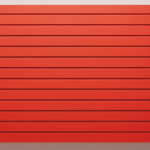Biography
Donald Judd was born June 3, 1928, in Excelsior Springs, Missouri. He registered at the Art Students League, New York, in 1948 but transferred a few months later to the College of William and Mary, Williamsburg, Virginia. In 1949, he moved back to New York to study philosophy at Columbia University while he took art classes at the Art Students League.
The Panoramas Gallery organized his first solo exhibition in 1957. The same year, Judd took art-history classes at Columbia University. He began to write articles for Art News in 1959 and the next year became a contributing editor for Arts Magazine until 1965, when he wrote reviews for Art International. In the early 1960s, he switched from painting to sculpture and started to develop an interest in architecture. Judd challenged the artistic convention of originality by using industrial processes and materials—such as steel, concrete, and plywood—to create large, hollow Minimalist sculptures, mostly in the form of boxes, which he arranged in repeated simple geometric forms.
His second solo show was held at the Green Gallery, New York, in 1963. From 1962 to 1964, he worked as an instructor at the Brooklyn Institute of Arts and Sciences. The Leo Castelli Gallery, New York, organized the first of a long series of individual exhibitions in 1966. This year, Judd was also hired as a visiting artist at Dartmouth College, Hanover, New Hampshire, and the following year he taught sculpture at Yale University, New Haven. The Whitney Museum of American Art, New York, organized the first retrospective of his work in 1968. During this decade, the artist received many fellowships, among them a grant from the John Simon Guggenheim Memorial Foundation in 1968.
In 1971, he participated in the Guggenheim International Award exhibition at the Solomon R. Guggenheim Museum, New York, along with other Minimalist and Conceptual artists. Judd moved to Marfa, Texas, in 1972. He participated in his first Venice Biennale in 1980, and in Documenta, Kassel, in 1982. In 1984, he started designing furniture for the purpose of manufacturing. During the first half of the 1980s, Judd drew the plans for the Chinati Foundation, Marfa; the renovated compound of buildings opened in 1986 as a showcase for his sculptures, as well as for the work of other contemporary artists.
In 1987, Judd was honored by a large exhibition at the Stedelijk Van Abbemuseum, Eindhoven; this show traveled to Düsseldorf, Paris, Barcelona, and Turin. The Whitney Museum of American Art organized a traveling retrospective of his work in 1988. In 1992, he was elected a member of the Royal Academy of Fine Arts, Stockholm, and received a prize from the Stankowski Foundation, Stuttgart, increasing the list of his numerous awards. During his lifetime, Judd published a large body of theoretical writings, in which he rigorously promoted the cause of Minimalist Art; these essays were consolidated in two volumes published in 1975 and 1987. The artist died February 12, 1994, in New York.

 Untitled (woodblock, 89-32) , 1989
Untitled (woodblock, 89-32) , 1989